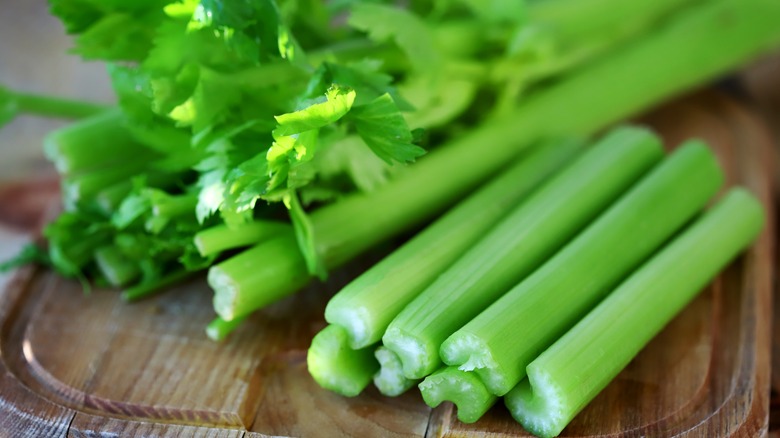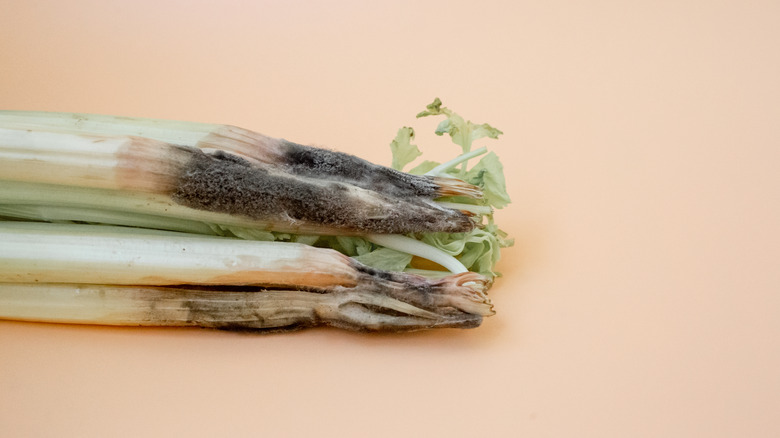How To Tell If Celery Has Gone Bad
Like most fresh vegetables, celery doesn't come with a "sell by" or "best by" date if its purchased in bulk. This leaves you guessing the date on which you bought it and whether it is still safe to eat or not. Sadly, celery often goes bad before you can use the entire bunch. After all, no one needs the whole bundle of celery for one simple recipe. How long can celery be stored in the fridge, and is there something you can do to prolong its shelf life?
According to Eat By Date, fresh celery lasts three to four weeks in the fridge before it goes bad, and cooked celery lasts for one week. These timelines assume the celery is stored correctly, of course. To properly store this vegetable, Eating Well instructs us to wrap the celery bunch in foil and place it in the fridge's crisper drawer. This reduces moisture and allows the ethylene to escape.
Ethylene is a gas that causes ripening in many fruits and vegetables (via Penn State). This gas is the very thing that causes wilting and spoilage in your produce (via Science Direct). Plastic bags trap this gas, causing the veggies to spoil faster, so avoid wrapping produce in plastic. Before tossing that bunch of celery, scroll on to learn how to spot whether your celery has gone bad.
The celery's appearance gives you a clue
There are several ways to figure out whether celery has spoiled. According to Eat By Date, celery has gone bad when its stalks become soft and bendable, the color becomes pale and faded, and the center of the stalk hollows out. Does It Go Bad says to toss your celery if it shows signs of mold, is mushy, or slimy. These are all signs that celery has gone bad. Lacademie instructs us to inspect the celery for smell, texture, and taste alterations. Changes in any of these are also signs that the produce is spoiled.
SFAM tells us that celery is among many fruits and veggies that cause food poisoning. E. coli, Salmonella, and Listeria are common among these foods. The U.S. Center For Disease Control says that the safest fruits and vegetables to consume are cooked, and the next safest is washed. The CDC instructs everyone to avoid eating unwashed fresh produce.
It is typical for celery to bruise, discolor, and lose its firmness. If this happens, simply trim away the brown spot or limp area and carry on. Celery that has lost its firmness, but hasn't spoiled yet, can be revived in a 30-minute ice-cold water bath. The frigid water helps the celery to regain some of its crisp texture. Happy crunching!

